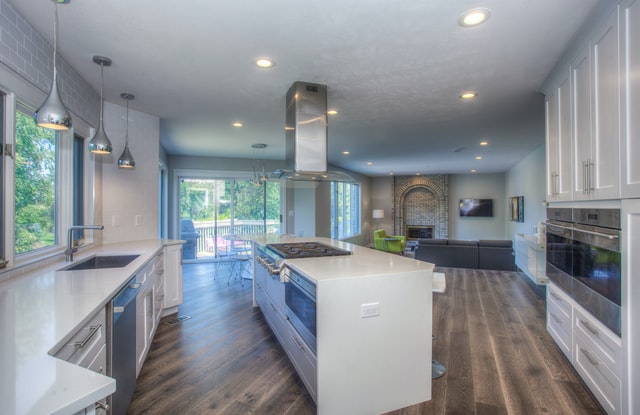Energy-efficient houses are built with energy-saving features to reduce emissions and their environmental impact. However, building new energy-efficient houses can actually result in increased carbon pollution.
Passive housing design and construction have improved in recent years. But, in some cases, making homes more energy efficient has led to increased emissions. From indoor pollution to increased energy demands, many homeowners are finding that their greener homes are not living up to expectations.
Furthermore, efforts to reduce operating emissions by installing greener technologies and design features to existing homes can actually increase embodied emissions. This can lead to further carbon pollution.
Increase in carbon pollution
While energy-efficient homes are a great step toward reducing carbon emissions, most of these houses only target operating emissions.
There are two main sources of emissions from a household; operating emissions and embodied emissions.
Operating emissions are those associated with running a household, e.g., appliances, heating, cooling, and lighting. These emissions are offset by green technologies and features such as solar panels, LED lighting, motion sensors, etc.
Embodied emissions, on the other hand, are those associated with the manufacturing, transporting, and assembling of the materials that are used to construct the house.
The real problem with most energy-efficient homes is that most builders are only targeting operating emissions and not embodied emissions. This makes sense since the majority of carbon emissions from a house’s life cycle is from operating emissions. However, as energy-efficient houses become more sophisticated, embodied emissions become a larger focal point.
Indoor pollution and increased energy demands
The new construction of energy-efficient homes or the green renovation of existing homes can increase carbon pollution and energy consumption. This is because efforts to reduce operating emissions are actually increasing embodied emissions.
This will come as a shock to many homeowners, particularly when more and more Australians are taking out personal loans to fund green renovations.
According to Ratesetter, “Borrowers in the Northern Territory have the highest average green loan amount of $11,462.51. Comparatively, Western Australia has the lowest average green loan amount of $5,982.75”.
Energy-efficient ‘add-ons’’ such as improved insulation is making homes more airtight, increasing indoor air pollution. Furthermore, renovating homes to make them more efficient along with the teardown and replacement of single-family homes are adding to the increase in carbon pollution.
The teardown cycle is preventing many single-family homes from surviving long enough to pay back the initial impacts caused by embodied emissions from construction materials.
And while many energy-efficient homes can reduce stress on the grid, they can also exacerbate their impact. Depending on the combination of thermal efficiency and appliances used, energy-efficient homes can impact electricity network reliability and lead to peak electricity demand.
Creating a carbon zero home
Achieving a carbon zero status requires careful planning and design. Decisions that you make about your home today will continue to have consequences throughout its entire life cycle. Therefore, it’s more cost-effective to design and build these homes to be energy efficient now with the zero-waste movement rather than seeking to address them via retrofits or green renovations, later.
Building an energy-efficient house from the outset of the project using renewable materials and cleaner modes of transport and construction is the most effective way to reduce carbon pollution.
Summing up
It’s important for homeowners to understand that their efforts to improve the energy efficiency of their homes is not a waste. Any steps that are taken to reduce emissions and environmental impact is a step in the right direction and can help to save a lot in energy bills.
To avoid increased carbon pollution, higher standards need to be applied to construction and building codes. Homeowners can also look to investing in building a new energy-efficient home from the ground-up. This will ensure that all features are checked for quality and efficiency for the long-term life of the house.
with our instant quote tool
